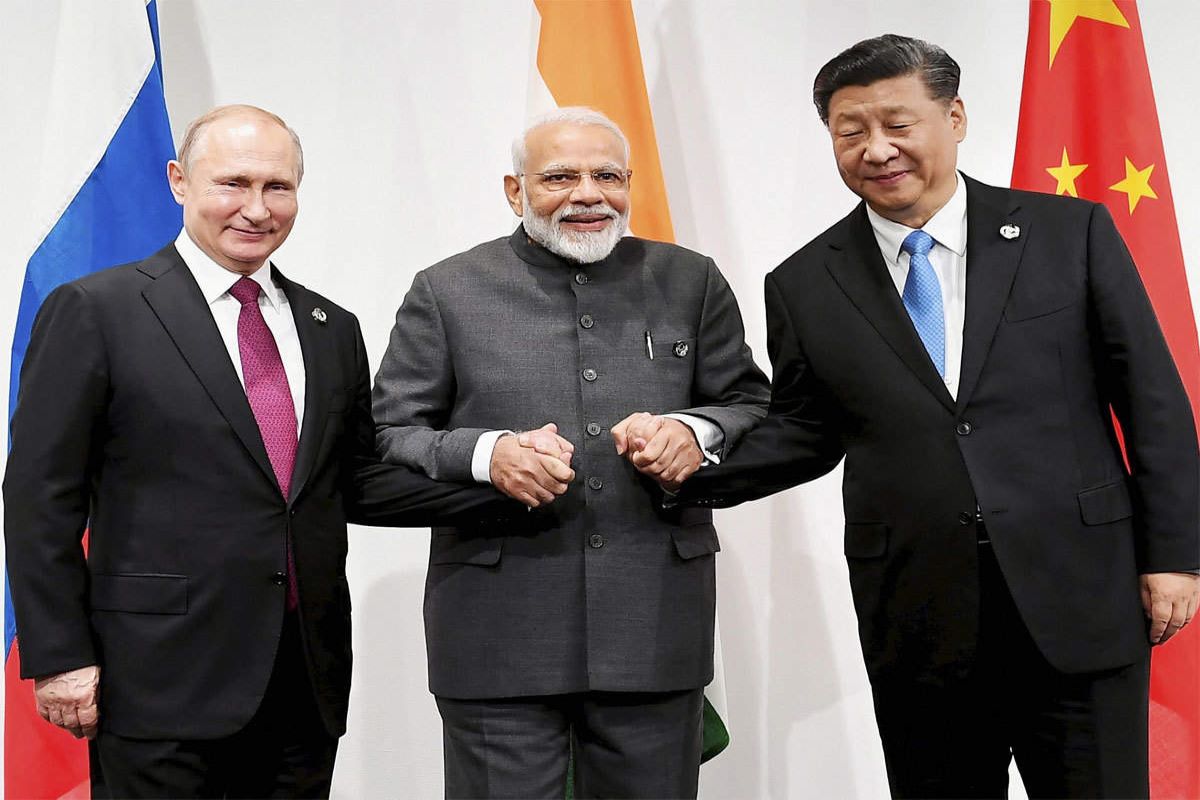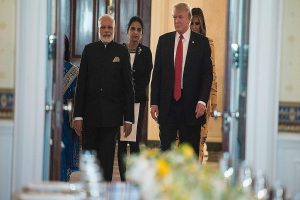The recently concluded third India-Central Asian dialogue followed by an invitation to the heads of state of these nations to the forthcoming Republic Day celebrations, indicates the inroads made by India. Central Asian nations encompass Tajikistan, Uzbekistan, Kazakhstan, Turkmenistan and the Kyrgyz Republic, all part of the erstwhile USSR.
Three of these countries, Tajikistan, Uzbekistan and Turkmenistan share a border with Afghanistan and the region largely remains under the military influence of Russia. India currently has a presence at the Fakhor air base in Tajikistan, which it exploited when it was conducting withdrawal of its staff from Kabul.
Advertisement
The foreign ministers of these nations attended the India-hosted dialogue, while sending their deputies to the simultaneous Pakistan conducted OIC conference on Afghanistan, conveying the importance they attach to relations with India. China making inroads into the region with its Belt Road Initiative is viewed with disapproval by Russia.
Despite the supposed bonhomie between China and Russia, relations between the two are a matter of convenience rather than based on mutual benefit. Differences in economy and capabilities places Russia as a minor partner to China, something President Vladimir Putin would be unwilling to accept.
With Europe and the US imposing sanctions on Russia for its takeover of Crimea as also increased tensions over Ukraine and US-China deteriorating ties, it is natural for the two nations to display solidarity with each other. Both would seek to ensure the other does not interfere in case one of them acts unilaterally in its area of interest, Beijing on Taiwan and Russia on Ukraine.
Display of proximity and signals of support divides US attention. Putin’s decision to attend the Beijing Winter Games opening ceremony, on an invite from President Xi Jinping, was more a display of defiance to the West than support for Chinese internal and external policies.
With India, Russia’s relationship has been time tested and beneficial, though trade has been low. Despite India’s proximity to the US, it displayed an independent and pro-Russia streak by signing multiple defence deals despite threat of sanctions. India has never criticized Russian actions. On its part, Russia has backed Indian concerns and sought to diffuse the current Indo-China crisis. Russia is sympathetic to Indian interests in its dealings with Pakistan, including sale of weapons.
Russia inducted India into the Shanghai Cooperation Organization as a counterweight to China, an act India is well aware of. The schedule of the Indo-Russia summit (6 December), the Indo-Central Asian dialogue (18-19 December) and the PM Modi-Putin telephone conversation of 19 December were not a coincidence. Russia would any day prefer Indian involvement in Central Asia as compared to Chinese inroads. Unlike China, India does not seek to dominate the region by replacing Russia.
This is because India is not a neighbour of these countries. China, which shares borders with Kazakhstan, Tajikistan, and the Kyrgyz Republic has and will remain a long-term threat, hence its inroads into the region are a matter of concern for Russia. An article by Temur Umarov, in the Carnegie Moscow Centre of February 2020, states that Chinese investment inroads into Central Asian nations is pushing them into a debt trap. The Kyrgyz Republic and Tajikistan owe over 40 per cent of their foreign debt to China.
The Chinese, having settled border disputes with these nations in their favour are now attempting to grab gold mining concessions and additional land in lieu of payments. It continues to demand the Pamir Knot region from Tajikistan, mainly because it borders Afghanistan and would enhance security for Xinjiang.
For China, the region provides land access to Europe. Diplomatic control of the area could stem Uighur nationalism, which has been on the rise. Anti-China and pro-Uighur protests are regularly held in these countries. As per reports, approximately 3 million central Asian residents reside in Xinjiang, whom China is attempting to repatriate. Finally, there are mineral resources including oil and gas, which China seeks to exploit.
While China controls these nations economically, Russia provides security through the Collective Security Treaty Organization. This is where Russian and Chinese interests clash as China seeks to replace Russia in the security domain. China has already been providing cheap weaponry to the region, most of it being poor copies of Russian equipment. In a virtual China-Central Asian foreign ministers’ summit in July 2020, Wang Yi, the Chinese foreign minister stated Chinese interests in the region include, ‘trade, medical aid, and security.’
For Russia, Chinese inroads into its security domain is unacceptable. For the Chinese, Indian inroads are equally undesirable. Ruslan Pukhov, Director of the Centre for Strategies and Technologies, Moscow, stated that India’s increased diplomatic proximity with Russia would displease Beijing. On India’s enhanced interactions with Central Asian nations, he stated that Russia seeks to reduce China’s influence in Central Asia by working with India to jointly manufacture and maintain weapons for the bloc. During the Indo-Russia summit, there were discussions on joint defence projects in these countries.
According to reports, a nonpaper (one without a diplomatic letterhead) was exchanged between the two sides covering Indian production of Russian-origin equipment and spares. TASS, the Russian news agency also reported that a document was signed mentioning that India will supply the former Soviet republics with spare parts for weapons that Russia and India manufacture jointly.
The joint statement at the end of the India-Central Asian dialogue talked of increased Indian investments and aid for the region. It also covered enhanced security cooperation, without too many specifics, other than regular NSA meetings. A number of projects were approved, and a USD 1 billion line of credit was sanctioned. Afghanistan, which concerns India, Central Asian nations and Russia was discussed in detail.
Joint counter-terrorism exercises involving India, Russia and Central Asian nations have also been planned in the coming year. With other global players missing, it has been left to Russia and China to actively dominate Central Asia. Russia seeks India alongside it, which China resents. However, neither nation would desire US or NATO military presence. For India, the region has value due to its mineral resources as also an opportunity to challenge China.
(The writer is a retired Major-General of the Indian Army)











